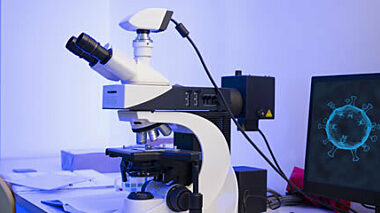Aircraft Engines - Microchemical Analysis of Barrier Coatings
Lucideon utilises a state-of-the-art electron microprobe system similar to an SEM (Scanning Electron Microscope), but different in that it is highly specialised to provide superior accuracy in elemental analysis using the X-ray emissions induced by an electron beam. Our microprobe utilises seven Wavelength Dispersive Spectrometers (WDS) for determining chemical information on a micron-by-micron scale. This provides spot scans, depth profiling, and elemental mapping of advanced superalloys and their coatings, at a level unavailable using the advanced Energy Dispersive X-Ray Spectroscopy (EDS).

Our capabilities
Combining the understanding of all steps in material development requires considerable scientific resource and expert knowledge, especially at commercially viable cost points. Our microchemical analysis capability brings together the capability and expertise rarely found in one company: materials science skills, analysis knowledge, and testing know-how. These areas can be used to provide material solutions to clients through this capability.
Depth profiling, rastering, and mapping
The electron probe system can be used for:
- Depth profiling – a line scan analysis used to understand material quantity at different depths
- Rastering – comparing chemistry information among defined areas
- Mapping – understanding the mixing of a material
Applications of the Electron Microprobe
- Elemental diffusion profiles across weld and braze joints, and glass defects
- Phase characterisations
- X-Ray element mapping to identify spatial variation in chemistry
- Corrosion product identification
- Identification of residue left by foreign and domestic object damage in support of failure analysis
Previous Work in Microchemical Analysis of Barrier Coatings
- Contamination of airfoils – alumide heat treatment
- Using the microchemical mapping, we were able to identify residue on the client’s component after production heat treatment. This meant the client was able to trace material back to a furnace fan.
- Failure analysis of coating – TBC plasma spray
- Using the EPMA (Electron Probe Microanalysis), we discovered a foreign element and, utilising an audio-search method, we could map out it out. This offending element was traced to their suppliers’ material so production could be resumed.

Solving Problems by Materials Analysis with an Electron Microprobe
